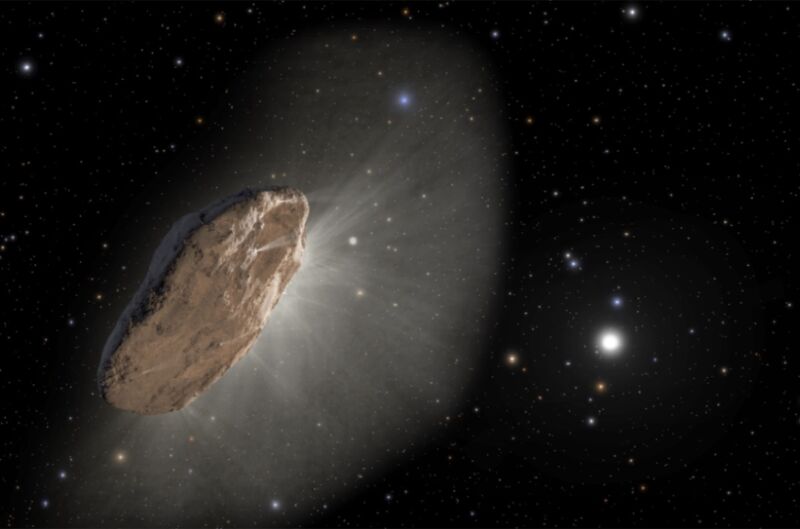
Enlarge / Artist's depiction of the interstellar comet 'Oumuamua, as it warmed up in its approach to the Sun and outgassed hydrogen. (credit: NASA/ESA/STScI)
In late 2017, our Solar System received its very first known interstellar visitor: a bizarre cigar-shaped object hurtling past at 44 kilometers per second, dubbed 'Oumuamua (Hawaiian for "messenger from afar arriving first"). Was it a comet? An asteroid? A piece of alien technology? Scientists have been puzzling over the origin and unusual characteristics of 'Oumuamua ever since, most notably its strange orbit, and suggesting various models to account for them.
But perhaps the answer is much simpler than previously thought. That's the conclusion of a new paper published in the journal Nature. The authors suggest that 'Oumuamua's odd behavior is the result of the outgassing of hydrogen as the icy body warmed in the vicinity of the Sun—a simple mechanism common among icy comets.
As we reported previously, 'Oumuamua was first discovered by the University of Hawaii's Pan-STARRS1 telescope, part of NASA's Near-Earth Object Observations program to track asteroids and comets that come into Earth's vicinity. Other telescopes around the world soon kicked into action, measuring the object's various characteristics.
Read 11 remaining paragraphs | Comments
